Porsche 550 (1953-1956)
Introduction
Porsche needed a race car to compete in the roadster class, and that’s just what the 550 Spyder did at a time when production cars could no longer win. In fact, the third 550 prototype and first 550 to race won its first event at the famed Nürburgring Eifel Race in 1953. Following that victory, the 550 went on to claim 95 victories and 75 class wins over a total of 370 races. The 550 Spyder was also famous because actor James Dean crashed his new 550 on a California highway and it ended his life. The 550 Spyder enjoyed a storied career, with 90 examples being built.
The Story & History
By the early fifties Porsche found that modified production cars would no longer win races. The Gmünd coupes had begun the marque’s sporting tradition. Frankfurt VW distributor Walter Glöckler and friend of the house of Porsche had followed with his eigenbau (homemade) specials. It was time Porsche themselves designed a car specifically for racing.
The 550 was Porsche’s first production racing car. The car was completely street legal, so it could be driven to the races and back home. A really special engine was developed for it, engineered by Ernst Fuhrmann. It was a flat DOHC engine, meaning it had 4 overhead camshafts like the Porsche type 360 design for Formula 1. Although with just 4 cylinders, the engine was really complicated and took a lot of time to build. Compared to the “regular” 1500 cc engine in the 356, the Fuhrmann 1500 didn’t have anything in common with it. The 4-cam Porsche engine developed twice the power compared to the single-cam unit based on the pre-war Volkswagen design (which was also a Porsche design).
Like Glöckler, Porsche contracted Weidenhausen of Frankfurt for the alloy bodies of the two cars being readied for the 1953 season. With Le Mans in mind, a coupe was planned, but the first car finished competed as a roadster in its initial race at the Nürburgring. Because it rained, Helm Glöckler (Walter’s cousin) would have preferred the display car to have had its hardtop but he fought the wet weather, Borgward and EMW, as well as carburetion problems – and won. Victory the first time out for any race car is a good thing.
At Le Mans, Hans Hermann joined Helm Glöckler in 550-01 and two driver-journalists –Richard von Frankenberg and Paul Frère – took 550-02. During practice with coupe tops fitted, the Porsches realized 124 mph on the Mulsanne straight but at a hellish price for the drivers. Still, claustrophobia, the lack of ventilation, and an almost unbearable noise level were inconveniences grudgingly endured for the speed advantage. The two cars were within a lap of each other for the entire 24 hours and crossed the finish line at the same interval at which they started. Le Mans scorers abhorred a tie, so a little more distance was found for 550-02, and the journalists took both the 1500 cc class and a new record. Season’s end found the cars on their way to Guatemala and a group of Porsche enthusiasts headed by Jaroslav Juhan who raced them in the Carrera Panamericana in Mexico (550-02 took its class) and the 1000-Kilometer Race in Buenos Aires (550-01 won) as well as at Sebring, among other races. “These incredible Porsches,” Autosport said. “Potent Porsches” headlined Autocar. The 550 showed three continents Porsche was serious about racing.
The first cars had long front lids and regular engine lids while just a few months later at the 1953 Paris Motor Show a 550 with a 356-like “regular” front lid was shown. It was a show car, another 550 prototype, the only one with “regular” front and rear lids. Out of all 550 made, the Paris show car looked the most as a series production street car. The next prototype was a humpback version (Buckel-Spyder) which came with a completely new feature – instead of the rear engine lid, the complete rear part of the car opened up to allow better access to the engine. Although the humpback was quickly dropped, from 1954 all the 550 were made with fully openable engine compartments.
The 550 had aluminium body on a frame similar in design to Ferdinand Porsche designed Auto Union racers of the nineteen thirties – with two large tubes running from front to the rear and the rest of the frame built of smaller diameter tubes.
For 1956, the 550 evolved into more powerful 550 A, which had a 5-speed transmission and an enhanced spaceframe. The engine cover had additional service hatches with louvres on the sides. The 550 A gave Porsche its first overall victory at a major motor sport event, the 1956 Targa Florio.
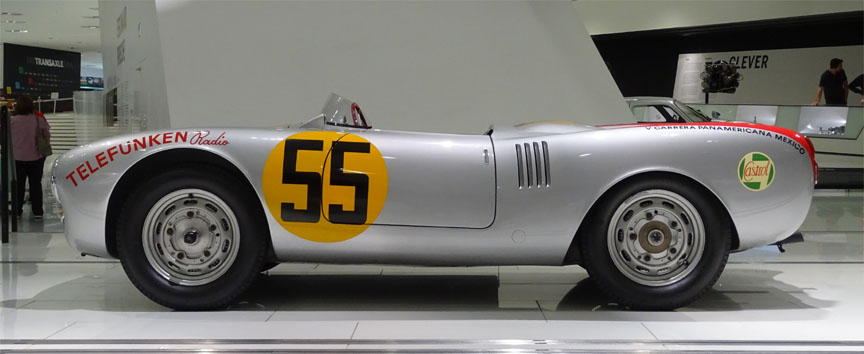
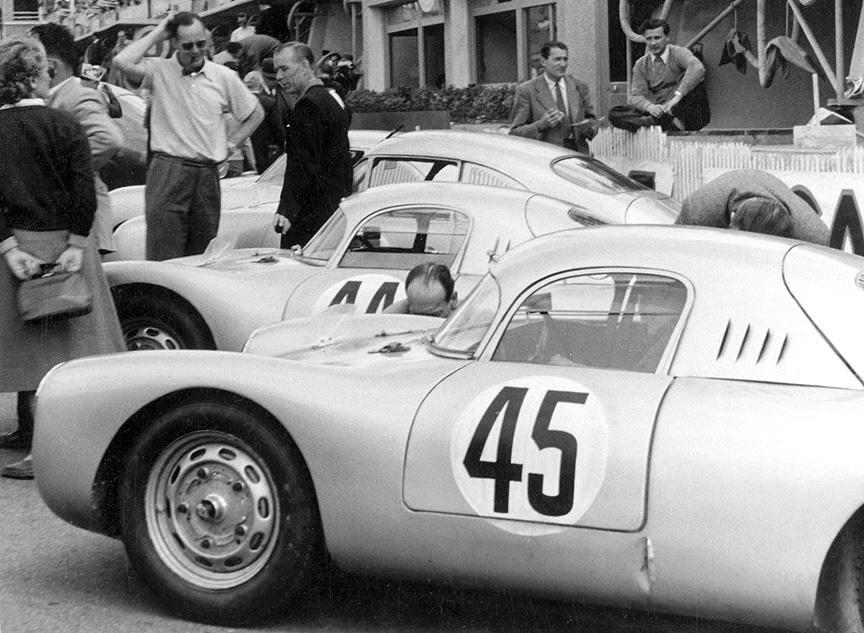
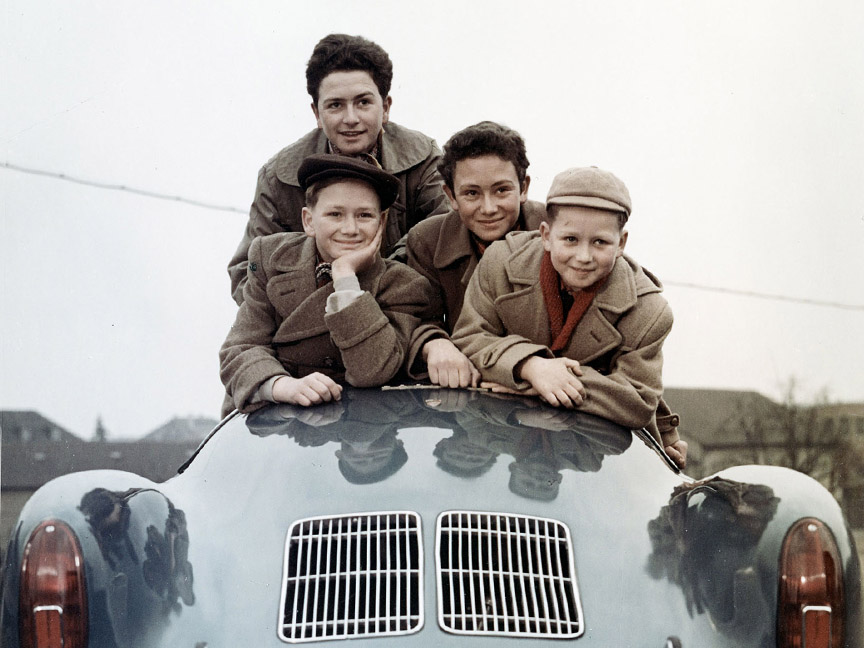
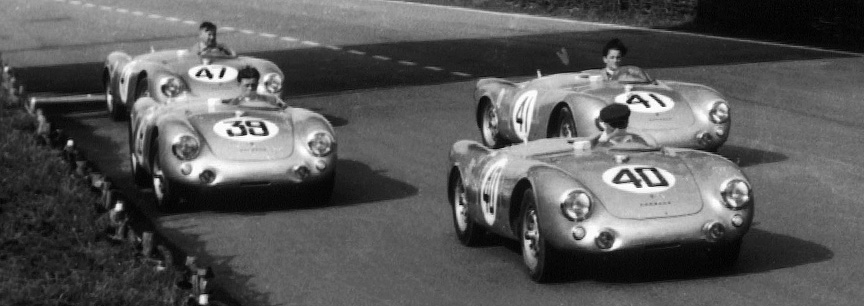
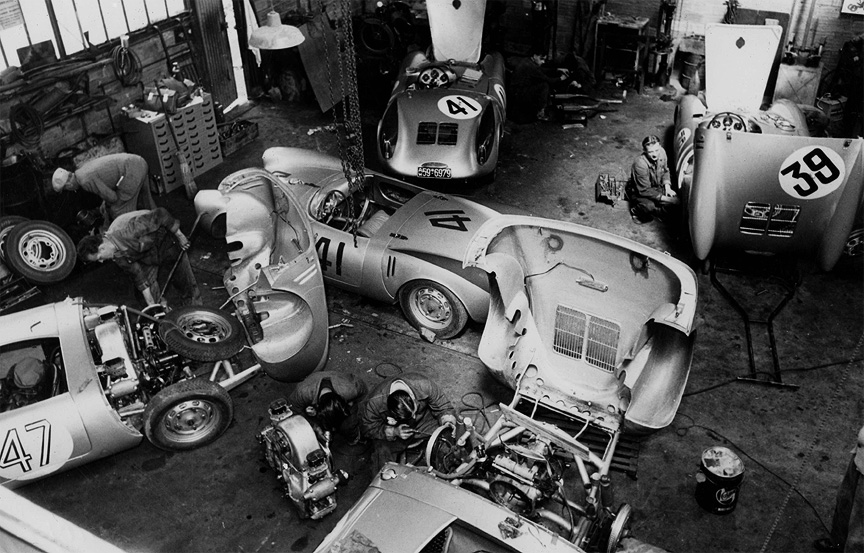
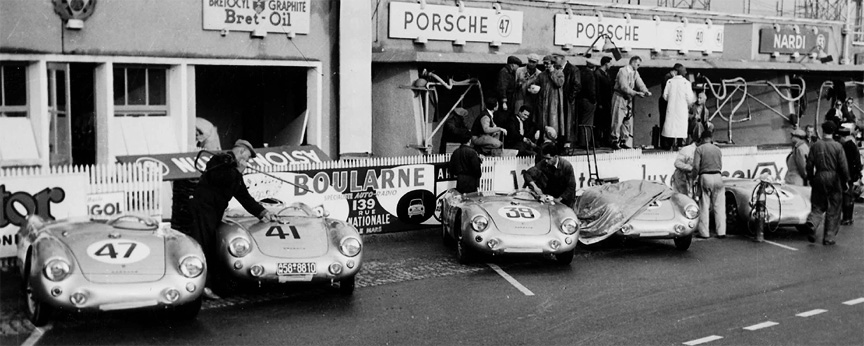
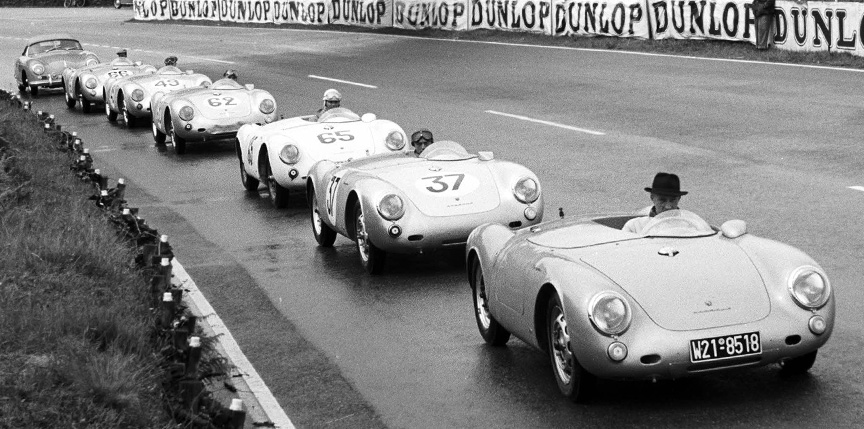
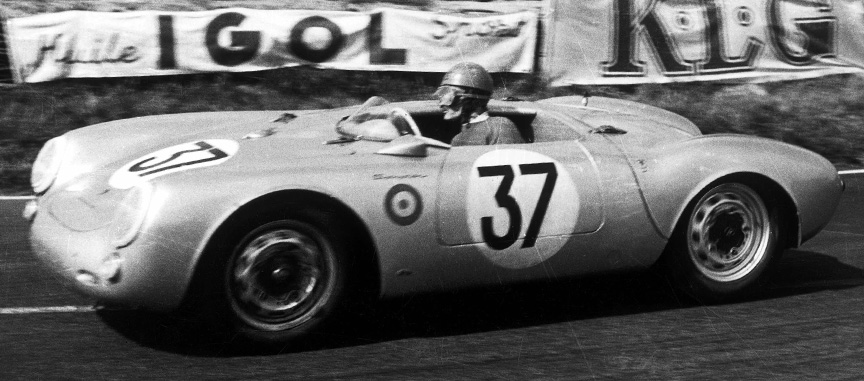
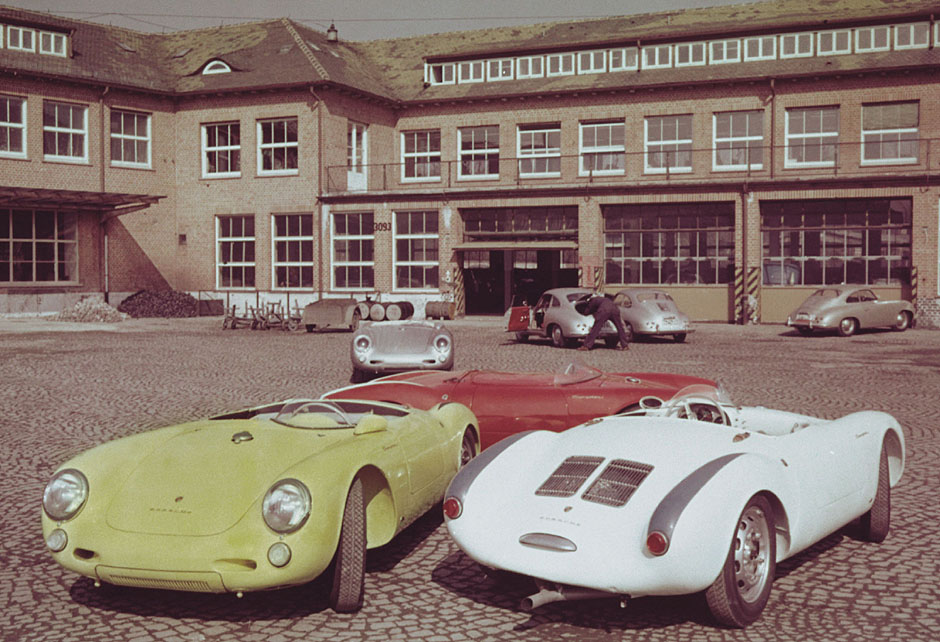
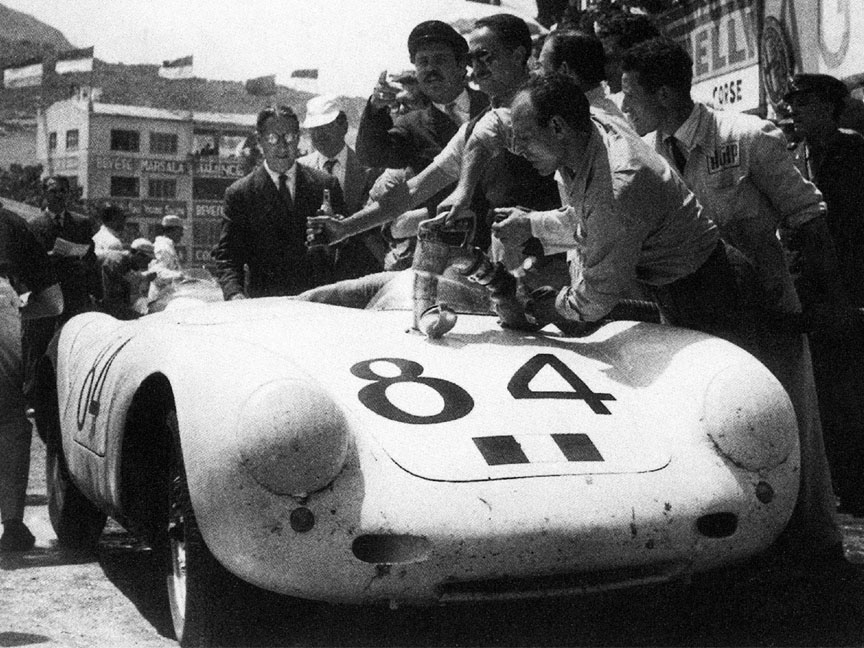
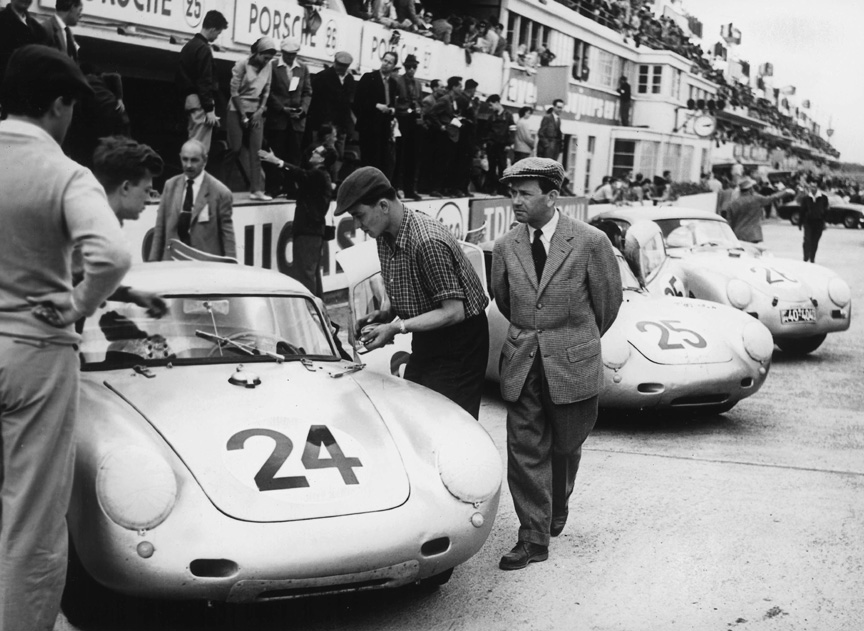
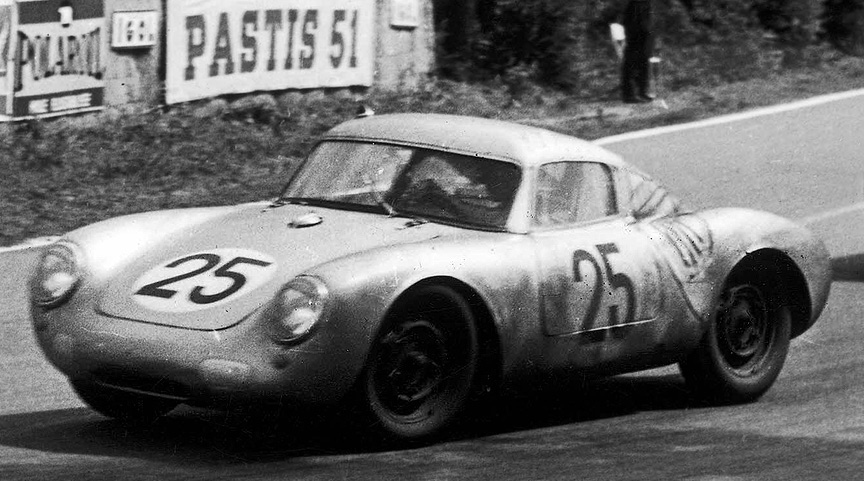
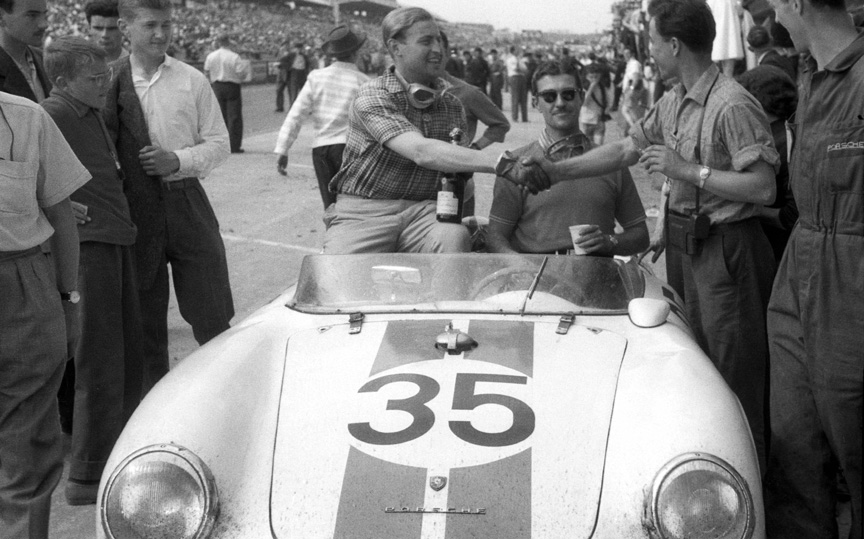


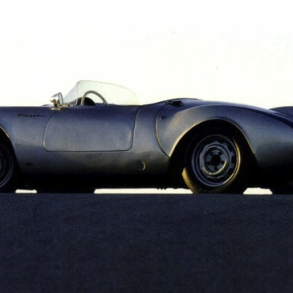
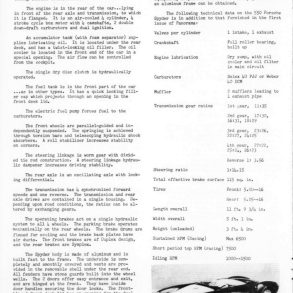
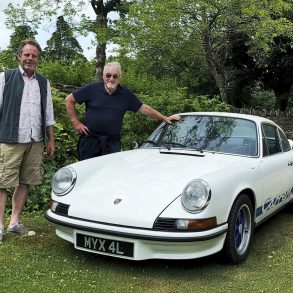
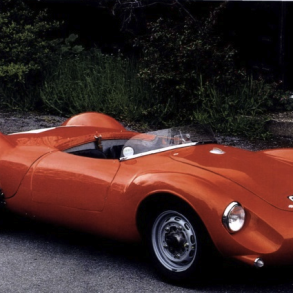
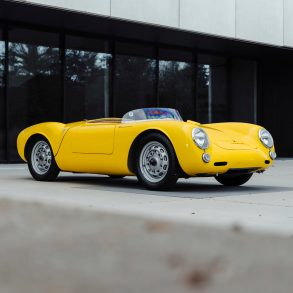
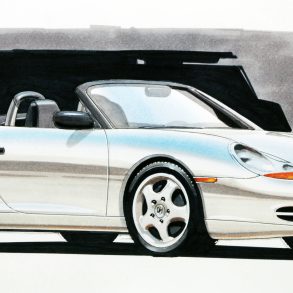
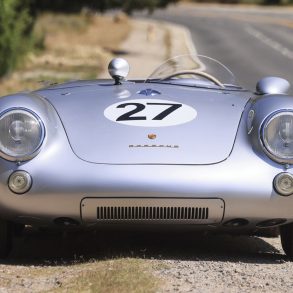
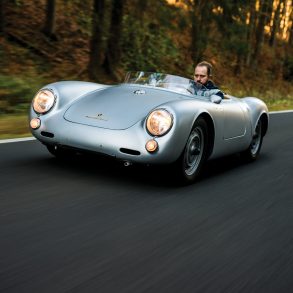

At Porsche excelence was al-
ways expected.H
0